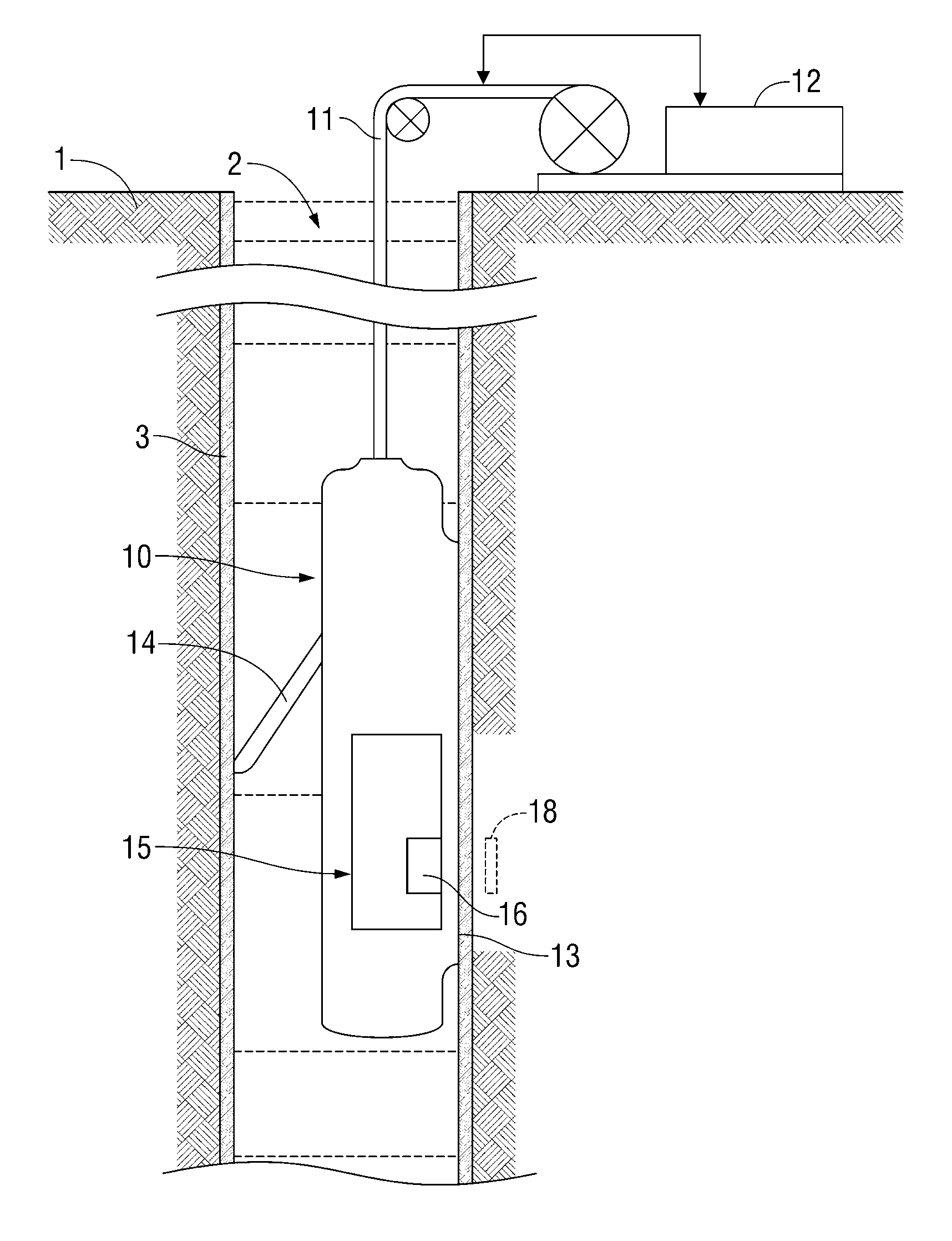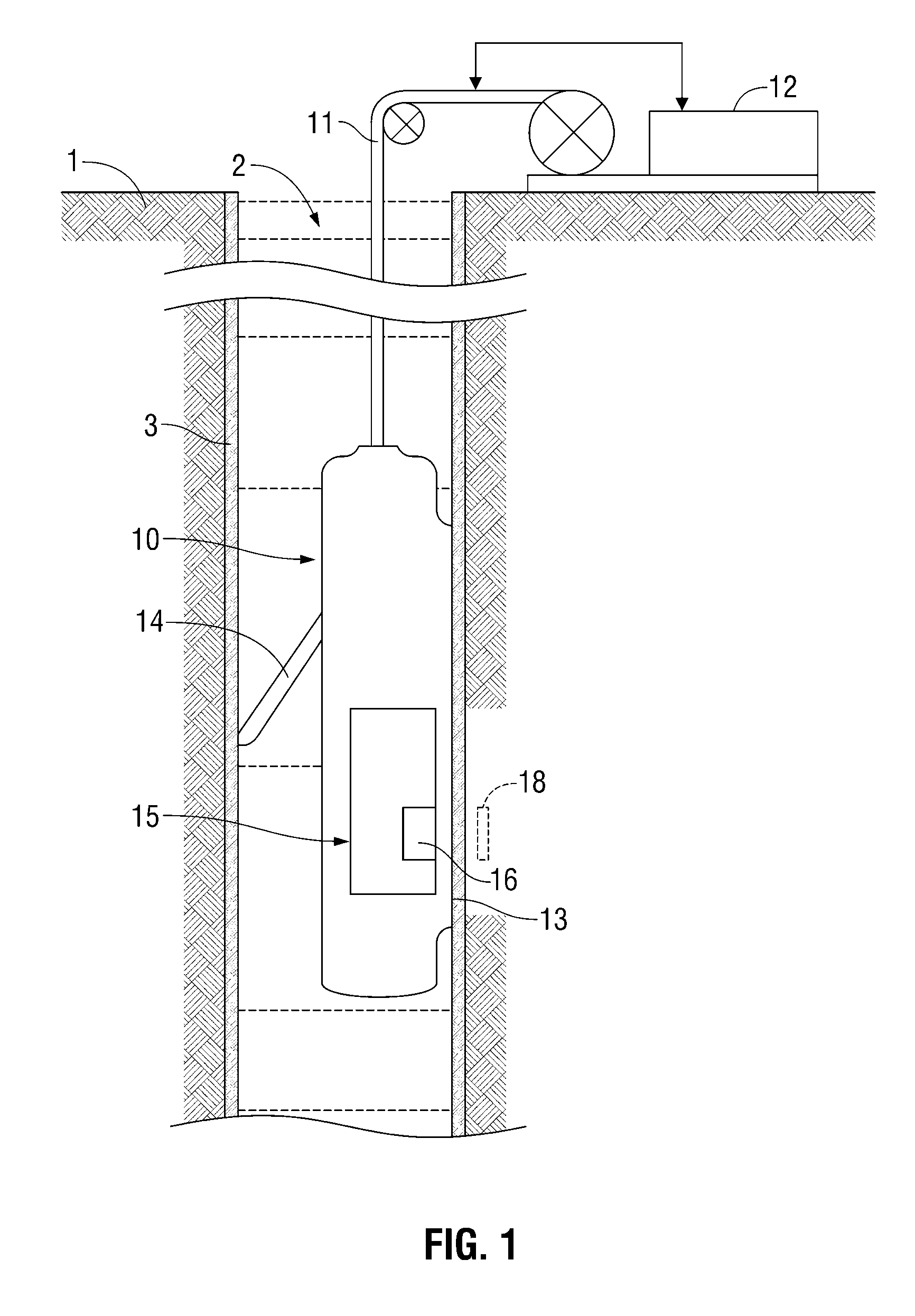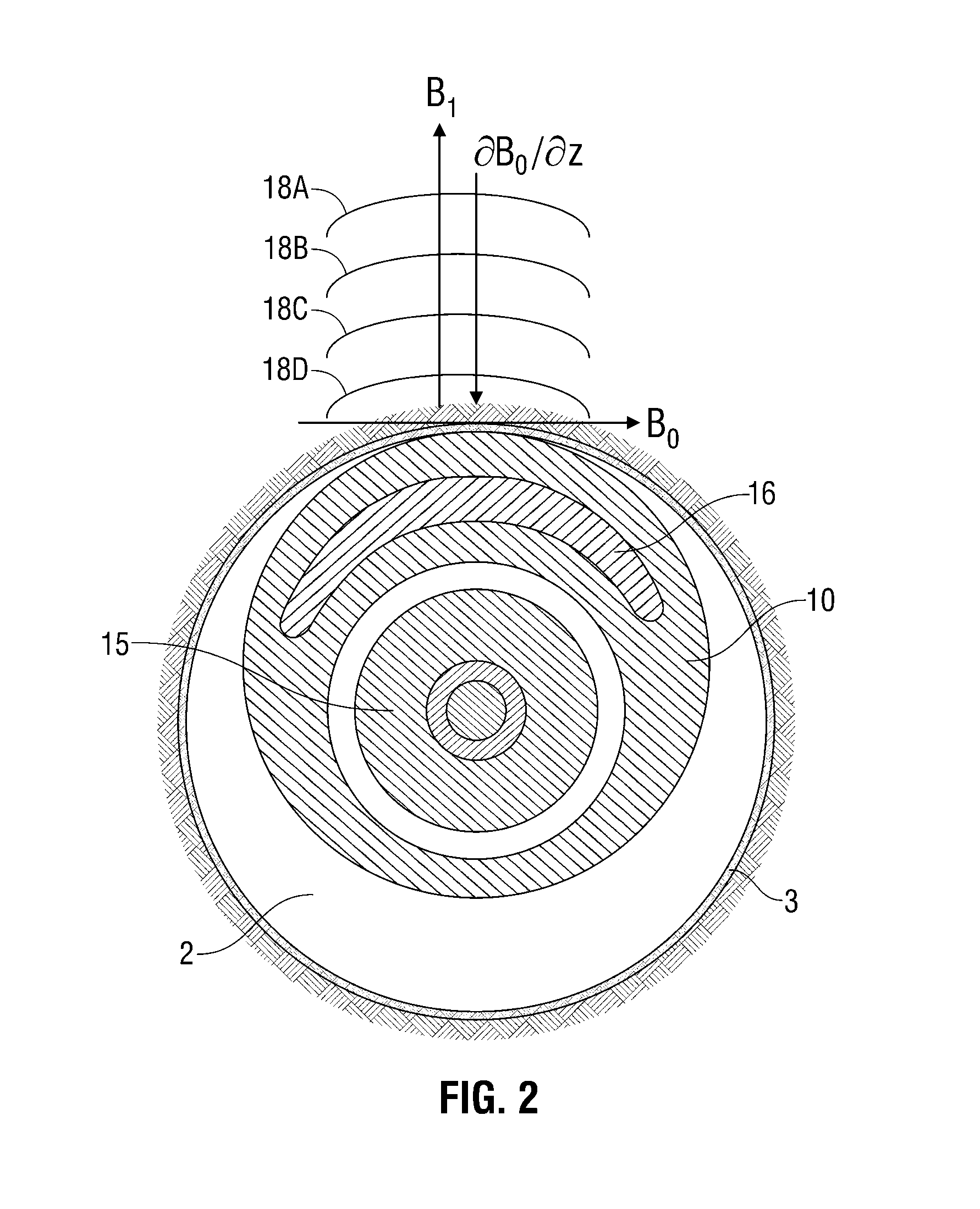System and method for emulating nuclear magnetic resonance well logging tool diffusion editing measurements on a bench-top nuclear magnetic resonance spectrometer for laboratory-scale rock core analysis
- Summary
- Abstract
- Description
- Claims
- Application Information
AI Technical Summary
Benefits of technology
Problems solved by technology
Method used
Image
Examples
Embodiment Construction
[0043]Embodiments of the invention relate to apparatus and methods for determining reservoir fluid properties using an NMR well logging tool. FIG. 1 shows an exemplary apparatus for investigating a subsurface formation 1 traversed by a borehole 2. The borehole 2 is typically, although not necessarily, filled with a drilling fluid or mud (which contains finely divided solids in suspension) with mudcake 3 on the walls of the borehole. A downhole logging tool 10 is suspended in the borehole 2 on an armored cable 11, the length of which substantially determines the relative depth of the logging tool 10. The cable length is controlled by suitable means at the surface such as a drum and winch mechanism (not shown). Surface equipment, represented at 12, can be of conventional type, and can include a processor subsystem and communicates with the logging tool 10. The logging tool 10 has a face 13 shaped to intimately contact the borehole wall, with minimal gaps or standoff, and a retractable...
PUM
 Login to View More
Login to View More Abstract
Description
Claims
Application Information
 Login to View More
Login to View More - R&D
- Intellectual Property
- Life Sciences
- Materials
- Tech Scout
- Unparalleled Data Quality
- Higher Quality Content
- 60% Fewer Hallucinations
Browse by: Latest US Patents, China's latest patents, Technical Efficacy Thesaurus, Application Domain, Technology Topic, Popular Technical Reports.
© 2025 PatSnap. All rights reserved.Legal|Privacy policy|Modern Slavery Act Transparency Statement|Sitemap|About US| Contact US: help@patsnap.com



